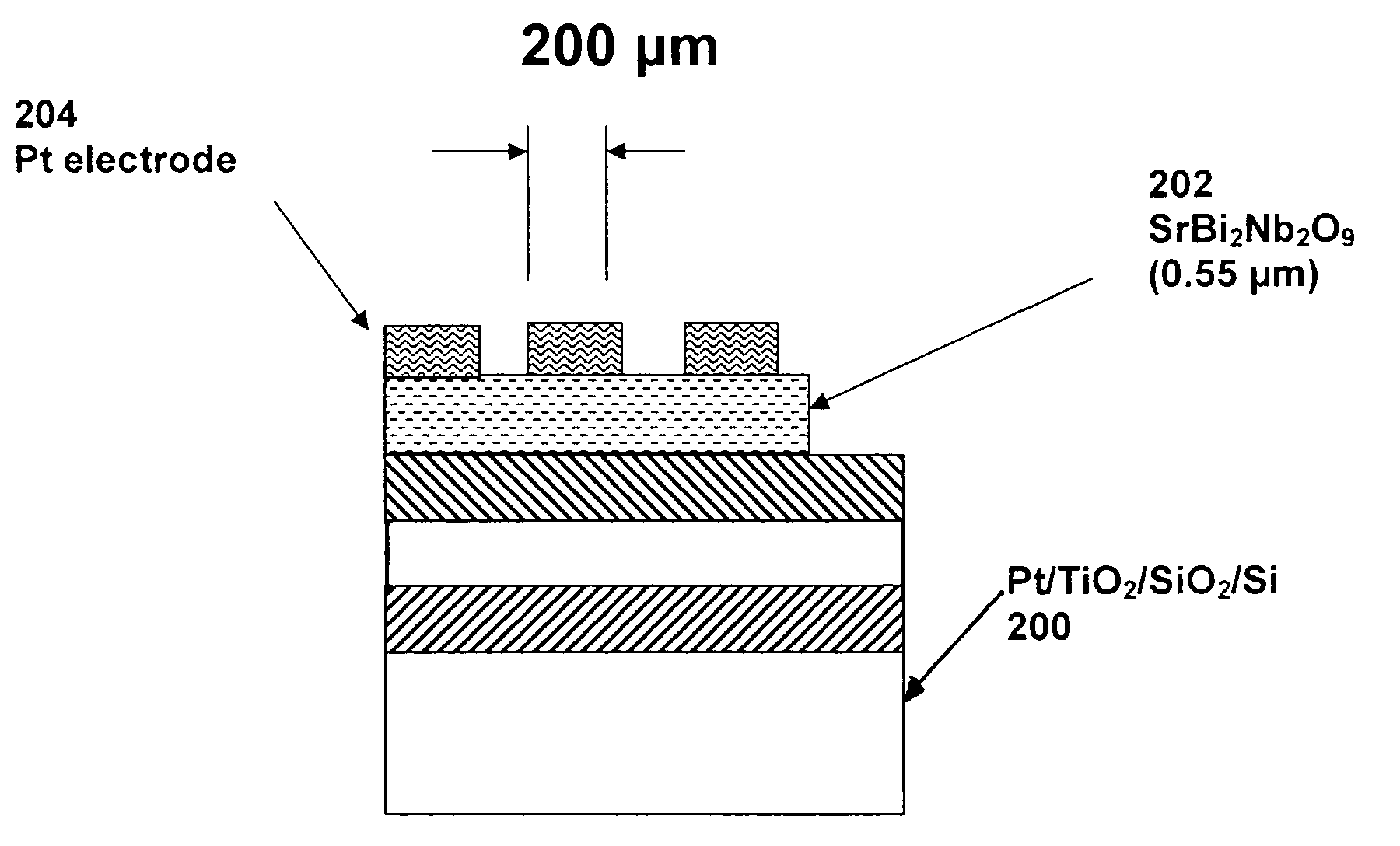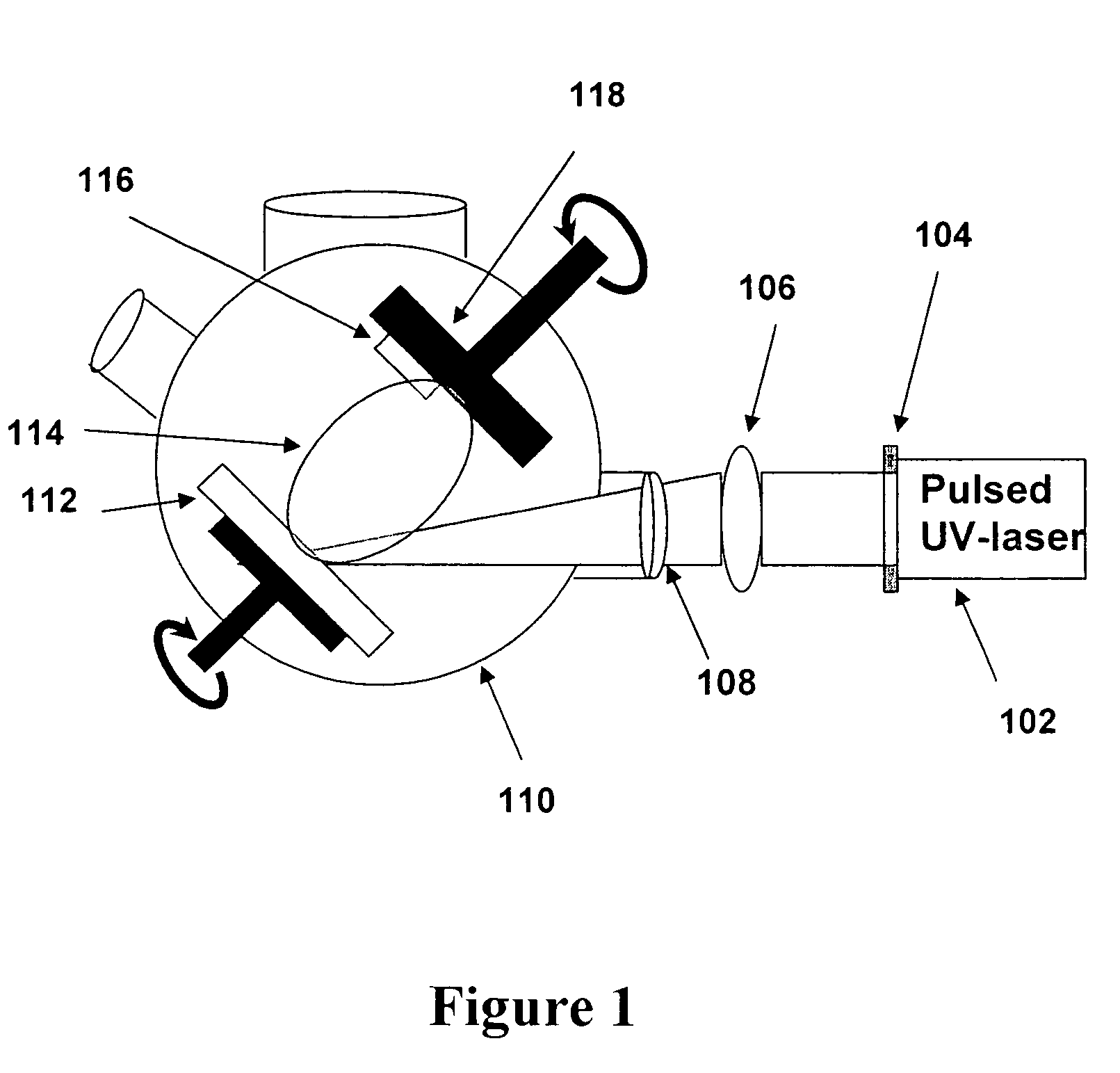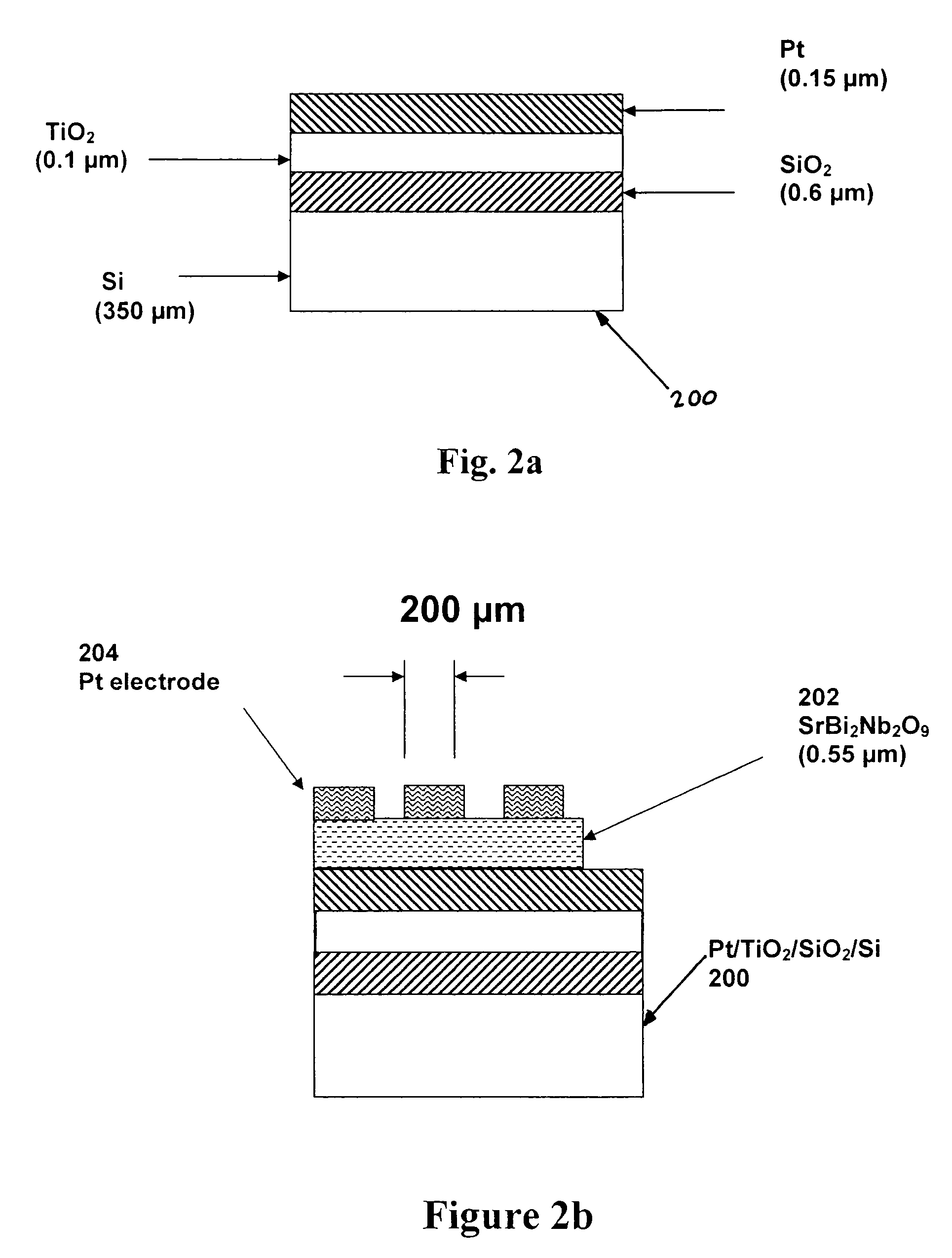Giant remnant polarization in laser ablated SrBi2Nb2O9 thin films on Pt/TiO2/SiO2/Si substrates
- Summary
- Abstract
- Description
- Claims
- Application Information
AI Technical Summary
Benefits of technology
Problems solved by technology
Method used
Image
Examples
Embodiment Construction
[0023]In accordance with the principles of the invention, one preferred method of fabricating an SrBi2NbO9 (SBN) thin film is described, with reference to FIG. 1. SBN thin films are deposited on Pt / TiO2 / SiO2 / Si substrates using pulsed-laser deposition. An excimer laser having a KrF beam, with a 248 nm wavelength (manufactured by Lamda Physik, model 210i) is used. The laser beam 102 has an energy density of approximately 1.5 J / cm2 and the pulse repetition rate is 10 Hz. The laser beam 102 passes through a mask 104, then through a condensing lens 106 and finally through a quartz window 108 into the deposition chamber 110. The laser beam 102 hits a rotating target 112 to generate a deposition plume 114. The substrate 116 is placed on a rotating heater 118 and is positioned off-axis from the center of the deposition plume 114.
[0024]The SBN is deposited until the thin film grows to 550 nm. A densed ceramic target with 15% excess bismuth was prepared by conventional powder processing. The...
PUM
| Property | Measurement | Unit |
|---|---|---|
| Temperature | aaaaa | aaaaa |
| Temperature | aaaaa | aaaaa |
| Length | aaaaa | aaaaa |
Abstract
Description
Claims
Application Information
 Login to View More
Login to View More - R&D
- Intellectual Property
- Life Sciences
- Materials
- Tech Scout
- Unparalleled Data Quality
- Higher Quality Content
- 60% Fewer Hallucinations
Browse by: Latest US Patents, China's latest patents, Technical Efficacy Thesaurus, Application Domain, Technology Topic, Popular Technical Reports.
© 2025 PatSnap. All rights reserved.Legal|Privacy policy|Modern Slavery Act Transparency Statement|Sitemap|About US| Contact US: help@patsnap.com



